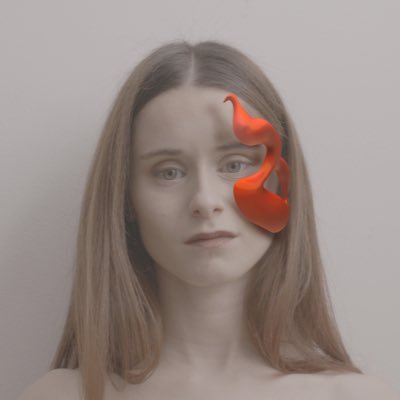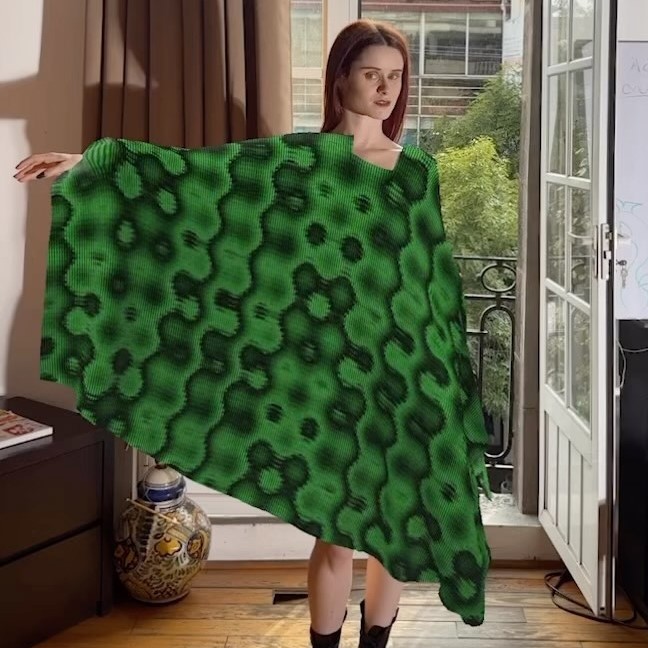[ad_1]
The metaverse brings with it many guarantees: discovering id anew by way of digital means, the democratization of knowledge, and the potential to attain monetary independence, to call a couple of. But, earlier than these broad-scope benchmarks may be achieved, it’s certainly as much as the blockchain-based builders of at the moment to iterate upon our present tradition to steer us into the longer term.
And though a true-to-form metaverse could also be a methods off, we’ve already begun to see glimmers of the fabled subsequent iteration of the web by way of advents like synthetic intelligence, Soulbound Tokens, and the crossover between digital and bodily. Particularly, because of the work of industry-leading creatives, comparable to Dani Loftus, our collective perspective about what the longer term would possibly really feel, sound, and appear to be continues to alter.
A pioneer within the digital trend world, Loftus exists towards the forefront of the cultural metamorphosis have been at the moment experiencing. And since each week, nft now’s Subsequent Up unveils a brand new artist from our curated record of ascendant abilities who’ve been making vital waves all through Web3, this week, we’re excited to focus on the continuing digital trend revolution by way of the lens of Dani Loftus.
Dani Loftus


Dani Loftus is an artist, mannequin, and self-proclaimed imaginary influencer who has change into identified for pioneering digital trend by way of digital outfits shared on social media. She is the founding father of This Outfit Does Not Exist, a platform geared toward bringing digital trend to life by way of exploration and exhibition.
In April 2023, Loftus took one other stride towards the forefront of digital trend innovation by launching Draup, a platform that goals to “convey code to couture.” By way of Draup, Loftus seeks to create digital trend collections in collaboration with pioneering artists — with the platform’s inaugural assortment that includes items from Nicolas Sassoon, who has labored with the likes of Uniqlo and Balenciaga.
In her endeavors, Loftus attracts on her previous expertise in blockchain-based fintech to assist drive the style {industry}’s transition in the direction of extra digital-leaning fashions of creation and consumption. Her need to revolutionize the accessibility and sustainability of digital clothes has led to her receiving numerous accolades each inside Web3 and the normal trend {industry}.
We had the chance to ask Dani Loftus a couple of questions on NFTs and her creative course of.
nft now: How did you first change into /concerned in NFTs?
Loftus: My first job out of school was in a blockchain-based fintech, so my first expertise of an on-chain world was comparatively early. Within the years after, I labored in innovation (and would write sci-fi on the facet) and have become fascinated by the idea of digitally native worlds and identities. I began as a digital trend content material creator in 2020, launching This Outfit Does Not Exist in 2021.
It got here as a response to my pleasure round the place digitally native identities have been heading and since, on the time, there was completely nothing on the market (not a single article) explaining what digital trend was or the promise it held. With the final bull market, when digital trend took off, I spotted there was nonetheless an absence of creators actually experimenting with what it meant to make digital trend past utilizing digital design software program. From there, Draup was born!
nft now: How would you describe your artwork?
Loftus: I feel ‘code as couture’ actually sums it up. For hundreds of years couture homes have introduced in one of the best seamstresses, tailors, and artistic administrators to convey their visions to life. We work with digital artists to that very same impact. Every assortment we create leverages parts of their craft to inform a narrative that’s not simply tech-enabled however tech-enhanced.
Equally, all of our collections are generative. Which means collectors get a singular piece of digital trend tied to the broader assortment with a shared algorithmic thread. Most of the traits we code in aren’t replicable in digital artwork however ‘trend native,’ materials, silhouette, and lower are all algorithmically influenced, which I hope has the impact of displaying what code-based couture actually represents.
nft now: What’s your course of like? The place do you often discover inspiration?
Loftus: As a result of every assortment is co-created in collaboration with a special digitally native artist, our course of is intensive and collaborative. We start with a theme for a group or season which we expect could be a compelling story to inform. We then make a shortlist of the artists we’d be excited to work with, essential right here is that digital trend is an extension of their current apply.
They might have labored with textiles, collaborated with manufacturers, or experimented of their spare time with fashion-related initiatives, however it’s important that they don’t see this as ‘making merch’ and have the eagerness that we do. As soon as we discover the artists, we determine on a component to co-create (in our first assortment with Nicolas Sassoon, it was moire patterns) and a honed-in narrative. Then, whereas they go away and work on that, our staff does all of the sketches and 3D design (AKA the extra fashion-native parts).
In direction of the top of the method, we come again collectively and start to converge their work and ours, each putting it into the fabric composition and coding parts into our generative 3D traits. I’ve at all times been impressed by avant-garde creators and collectors who are inclined to the fantastical facet of trend. Assume Thierry Mugler, Isabella Blow, and Alexander McQueen. I additionally love nice tongue-in-cheek storytellers. The previous few months, that’s been MSCHF and Tommy Money.
[ad_2]

There is certainly a lot to find out about this
subject. I love all of the points you made.